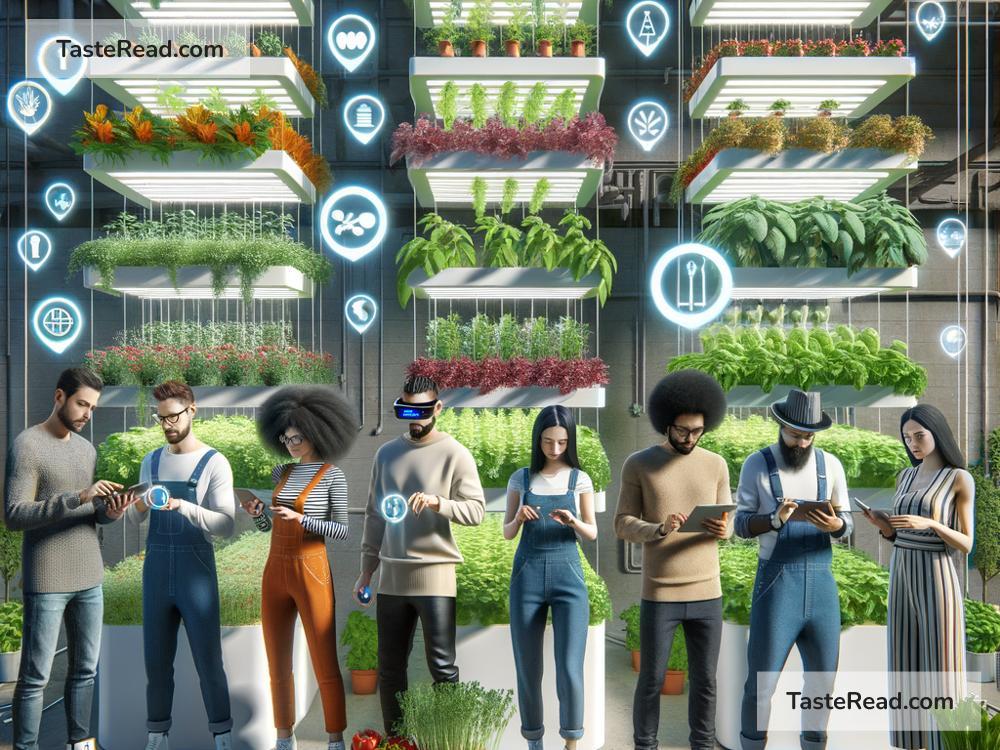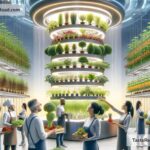The Future of Food and Participatory Systemic Innovation: Creating a Better Tomorrow Together
Food is more than just fuel for our bodies; it’s the foundation of our health, culture, and communities. However, as challenges like climate change, population growth, and resource scarcity continue to rise, the way we produce, distribute, and consume food needs to evolve. So, what does the future of food look like? And how can communities, businesses, and governments work together to drive innovation in food systems?
Here, we’ll explore the role of participatory systemic innovation in shaping a sustainable and inclusive food future—using simple concepts to understand a complex topic.
The Challenges Facing Our Food Systems
To understand why food systems need innovation, we must first look at the challenges they face:
-
Climate Change
Extreme weather events, rising temperatures, and unpredictable rainfall are making farming more difficult. Droughts, floods, and heatwaves threaten crops, animals, and farmers’ livelihoods. -
Population Growth
The world’s population is expected to reach nearly 10 billion by 2050. Feeding so many people requires smart solutions that increase food production without harming the planet. -
Resource Scarcity
Key farming resources like water, arable land, and healthy soil are becoming harder to find. Current farming methods often deplete these resources, leaving future generations in a tough spot. -
Food Waste and Inequality
While millions of people face hunger every day, staggering amounts of food—about one-third globally—end up wasted. Building fairer systems that reduce waste and ensure access to food for all is essential. -
Health and Nutrition Issues
Modern diets tend to rely heavily on processed foods, leading to obesity, diabetes, and other health problems. A shift toward healthier, locally-sourced foods is needed to improve well-being.
What Is Participatory Systemic Innovation?
Now comes the exciting part: how can we tackle these challenges? The answer lies in “participatory systemic innovation.” While the term may sound technical, it’s based on a simple idea—solving big problems by bringing together everyone involved in the system.
A systemic approach means looking at the big picture. Food systems include farmers, distributors, buyers, grocery stores, and even nature itself. These components are connected, and improving one part often requires changes in the others.
Participatory innovation, on the other hand, is all about collaboration. It ensures that solutions to food challenges don’t come just from a single person, company, or government—but from everyone working together: experts, communities, businesses, and even consumers.
Combining these approaches allows us to design smarter, more sustainable food systems that benefit all.
Shaping the Future of Food with Innovation
So, how do food systems look in the future? Let’s dive into some promising ideas. Participatory systemic innovation already enables exciting food advances, which can guide us toward a better tomorrow.
-
Regenerative Agriculture
Rather than depleting the soil, regenerative farming methods—like rotating crops, composting, and planting trees—help restore the land’s health. These practices not only produce nutritious food but also capture carbon from the air, fighting climate change. Collaborative projects between scientists, farmers, and policymakers make it possible to train farmers worldwide in these methods. -
Alternative Proteins
With growing demand for meat, the future may rely on alternative proteins like plant-based meats or lab-grown meat. These innovative products use fewer resources and produce less pollution than traditional livestock farming. Companies and consumers can play a role by testing and embracing these foods, encouraging wider adoption. -
Smart Technology in Farming
Farms of the future could adopt technology like drones, sensors, or artificial intelligence (AI) to improve crop yields and protect the environment. For example, farmers can use sensors to measure soil moisture and apply just the right amount of water, reducing waste. Training programs and partnerships ensure farmers everywhere have access to these tools. -
Food Waste Solutions
To tackle food waste, communities and businesses are developing creative solutions. Apps help connect extra food from restaurants and supermarkets to people in need. Local composting projects turn waste into fertilizers for farms, closing the loop in sustainable ways. -
Urban Farming
Cities are transforming into hubs of farming innovation, with rooftop gardens, vertical farms, and indoor aquaponics systems. These methods allow fresh food to be grown closer to where people live, reducing transportation costs and emissions. -
Policy and Advocacy
Participatory innovation also relies on policymakers and communities. Governments can encourage sustainable practices by offering incentives for green farming, reducing food waste, and ensuring healthy eating options in schools.
The Power of Inclusive Collaboration
To truly reshape the future of food, everyone must play a role. Participatory systemic innovation isn’t limited to experts; it’s about listening to all voices, especially local communities and farmers who experience challenges firsthand.
Here are ways everyday people can contribute:
– Support local farmers by buying fresh, seasonal food.
– Advocate for food programs and policies that prioritize sustainability and equity.
– Reduce food waste by planning meals and composting leftovers.
– Try innovative, eco-friendly choices like plant-based proteins.
By working together, we can create food systems that nourish people while protecting the planet.
Conclusion: The Path to a Sustainable Food Future
The future of food is both a challenge and an opportunity. Through participatory systemic innovation—where collaboration drives progress—we can address food insecurity, climate change, and other pressing issues.
The road ahead isn’t just about technology or big ideas. It’s about the people behind them—farmers experimenting with sustainable practices, scientists searching for breakthroughs, policymakers shaping supportive laws, and consumers embracing change. Together, we can build a food system that’s good for people, the planet, and generations to come.
Food is a shared experience, so let’s share the responsibility of creating a better tomorrow.


